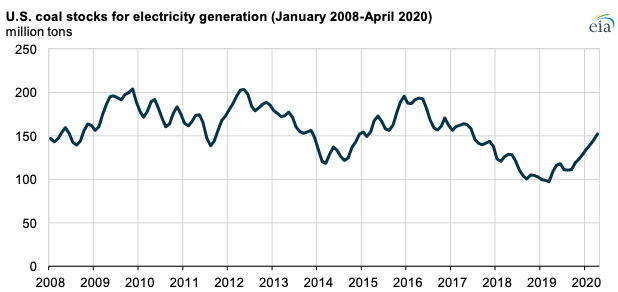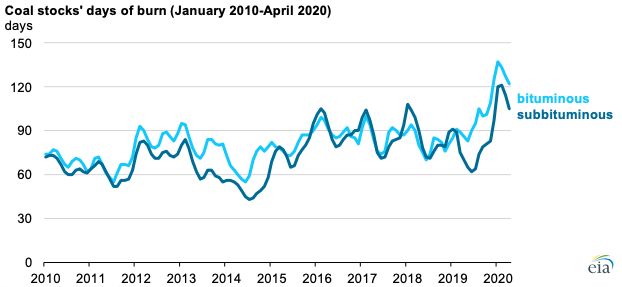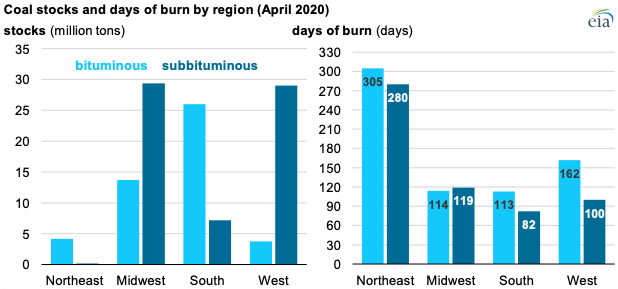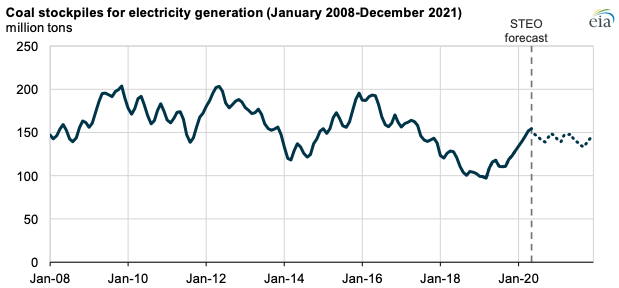After reaching their lowest level in more than a decade in March 2019, U.S. coal stockpiles steadily increased to 152 million tons in April 2020, recovering to levels not seen in three years. Total U.S. coal stockpiles have increased as coal-fired generation has fallen to a 42-year low.

Coal power plants generally stockpile much more coal than they consume in a month. Coal consumed by power plants in the United States follows the seasonal pattern in overall electricity generation; coal consumption is typically highest in the summer and winter months. Because coal-fired power plants are consuming more coal in the warmest summer months and coldest winter months, coal stocks at power plants are often at their lowest in August and February.
In addition to surveying coal stockpile levels, the U.S. Energy Information Administration (EIA) also calculates how long these stockpiles would last, assuming the power plants receive no additional coal. This value, known as days of burn, considers each plant’s current stockpile level and its estimated consumption rate in coming months. In April 2020, U.S. coal power plants had, on average, about 114 days of burn.

Because coal-fired power plants use different types of coal, EIA tracks days of burn based on coal rank. The two main types of coal used for electricity generation in the United States are bituminous coal, which is mostly produced in states such as West Virginia, Illinois, and Pennsylvania, and subbituminous coal, which is mostly produced in Wyoming.
For bituminous coal-fired power plants, most of which are located in the eastern United States, the average number of days of burn reached 122 days in April 2020. For subbituminous coal-fired power plants, largely located in the Midwest and West, the average number of days of burn was slightly lower at 105 days in April 2020.

EIA expects coal stockpiles to remain relatively steady through 2021, according to forecasts in EIA’s August 2020 Short-Term Energy Outlook. EIA expects coal to drop from providing the second-largest share of the U.S. electricity generation mix in 2019 to the fourth-largest share in 2020, displaced by both nuclear and renewable generation. In 2020, EIA forecasts that coal will provide 683 million megawatthours, or 18% of total electricity generation—less than natural gas at 1,510 million megawatthours (40%), nuclear at 795 million megawatthours (21%), and renewables at 756 million megawatthours (20%).
To provide that electricity, EIA expects the U.S. power sector will consume about 377 million short tons of coal. If realized, this amount of coal consumed by the U.S. power sector in 2020 would be the lowest since 1972. EIA expects coal-fired electricity generation to reclaim a small portion of generation share in 2021, averaging 22% for the year, less than natural gas (35%) but more than nuclear (21%) and on par with renewables (22%).

Principal contributor: Rosalyn Berry

Follow us on social media: